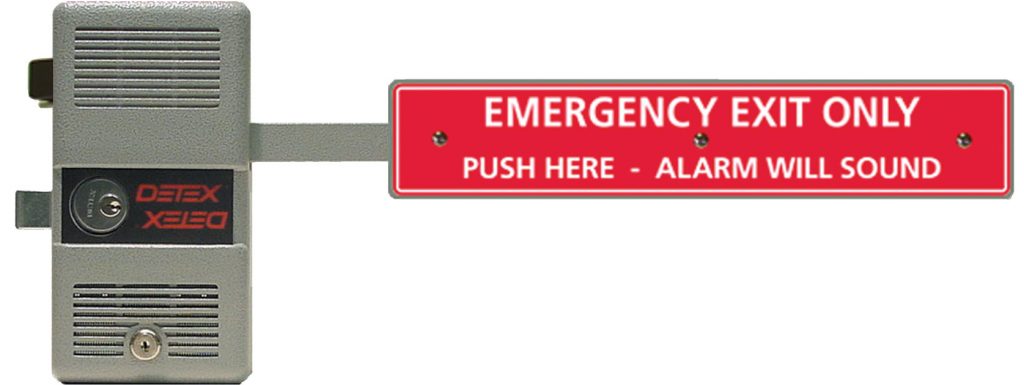Exit devices play a crucial role in ensuring safety during emergencies, but not all are created equal. While panic exit devices and fire-rated exit devices may look similar, their purposes and applications differ significantly. Understanding these distinctions is key to selecting the right hardware for your building’s needs.
What Are Panic Exit Devices?
Panic exit devices, often called crash bars, push bars, or simply exit devices, are designed to allow quick and easy egress during emergencies. They operate by releasing a latch when pressure is applied to a horizontal bar or pad in the direction of exit travel.
Key Features:
- Ease of Use: The device unlocks the door with minimal force (15 pounds or less).
- Coverage: The push bar or pad must extend at least half the width of the door.
- Application: Required by the International Building Code (IBC) for certain buildings, including:
- Educational and assembly facilities.
- High-hazard occupancies.
- Electrical or battery rooms.
- Relocking: While panic exit devices can re-latch when the door closes, re-latching is not mandatory.
Purpose:
Panic exit devices prioritize speed and simplicity, enabling occupants to exit safely during emergencies, such as a fire or other life-threatening situations.
What Are Fire-Rated Exit Devices?
Fire-rated exit devices serve a dual purpose: providing quick egress while also maintaining the integrity of a fire-rated door assembly. These devices are designed for doors that help compartmentalize a fire, slowing its spread and allowing more time for evacuation and emergency response.
Key Features:
- Fire-Rated Doors: Used on doors within fire-rated walls, such as:
- Stairwell doors.
- Doors to common hallways.
- Doors within separation walls.
- Re-Latching: Fire-rated exit devices must re-latch automatically when the door closes, ensuring the door remains securely closed during a fire.
- Industry Testing: These devices must pass rigorous testing to confirm they can secure the door during a fire.
- Time Rating: Must bear a label indicating the fire rating, typically ranging from 20 minutes to 3 hours.
- No Mechanical Dogging: Fire-rated devices cannot be mechanically dogged (held in the open position), though electric dogging is permitted.
Purpose:
Fire-rated exit devices are critical for life safety and property protection, ensuring that fire-rated doors perform as intended to contain fire and smoke.
Key Differences Between Panic and Fire-Rated Exit Devices
| Feature | Panic Exit Devices | Fire-Rated Exit Devices |
| Re-Latching | Optional | Mandatory |
| Fire Resistance | Not required | Must pass fire-resistance testing |
| Mechanical Dogging | Allowed | Not allowed (electric dogging permitted) |
| Fire-Rated Doors | Not required | Required |
| Applications | General emergency exits | Fire-rated door assemblies |
Choosing the Right Device
When selecting exit hardware, consider the specific requirements of your building and its safety codes:
- Use Panic Exit Devices for doors in educational facilities, assembly spaces, or high-hazard areas where quick egress is the primary concern.
- Use Fire-Rated Exit Devices for doors within fire-rated walls, such as stairwells and hallway separation doors, where fire containment is crucial.
Keep in mind that all fire-rated exit devices are also panic exit devices, but not all panic devices meet fire-rating requirements.
Conclusion
Understanding the difference between panic exit devices and fire-rated exit devices ensures that your building is both safe and compliant. By selecting the right hardware for each door, you can protect occupants, preserve property, and meet building code requirements.









